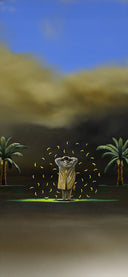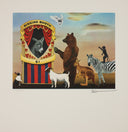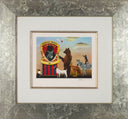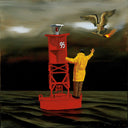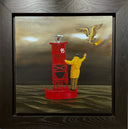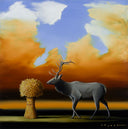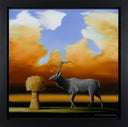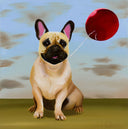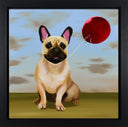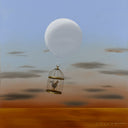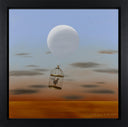About the Artist
Robert Deyber (1955 – 2021) was a celebrated American artist whose imagination transformed language into vivid visual storytelling. Known for his witty and surreal interpretations of common sayings, puns, and idioms, Deyber’s art invites collectors into a world where humor, elegance, and the subconscious meet. His works blend charm with depth, speaking not only to the delight of wordplay but also to the resilience of the human spirit.

Influenced by masters such as René Magritte and Salvador Dalí, as well as the dramatic landscapes of Hudson River School painters Thomas Cole and Frederick Church, Deyber created a signature style that is both sophisticated and accessible. His unsettled skies and dreamlike settings became the stage for playful yet poignant narratives that continue to captivate audiences worldwide.
Often described as a “visual raconteur” and a “pop surrealist,” Deyber’s art occupies a unique space between sincerity and irony. His imagery ranges from subconscious dreamscapes to clever takes on cultural phraseology, all delivered with a visual vocabulary unmistakably his own.
Collectors across the globe, including private patrons, corporations, and prominent figures in the entertainment industry, have embraced Deyber’s vision. Among them was music legend Tom Petty, who not only collected Deyber’s work but also commissioned him to create the cover art for his 2006 solo album Highway Companion.
Today, Deyber’s limited-edition lithographs remain highly sought after. Produced in Paris by the esteemed printer Art Estampe using the centuries-old method of stone lithography, each work preserves the artist’s vision with uncompromising fidelity. Every edition, limited to 395 impressions, is hand-pulled and initialed by the artist—ensuring exclusivity, authenticity, and enduring value for discerning collectors.
Robert Deyber’s art continues to enchant, surprise, and resonate, securing his place as a modern master of wit, imagination, and fine craftsmanship.



